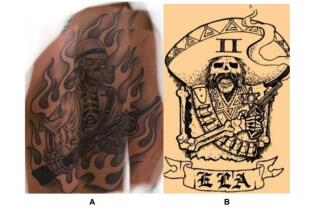Judge’s ruling is a setback to L.A.’s efforts to combat supergraphics
- Share via
A federal judge Monday dealt a blow to Los Angeles’ attempt to rid the city of enormous signs that stretch across office buildings, but did signal that at least 85 signs proposed by the city’s most prolific supergraphic entrepreneur would not be allowed.
U.S. District Judge Audrey B. Collins, in a tentative ruling, found the city in contempt for taking enforcement actions against one outdoor advertising company, World Wide Rush LLC, which has 21 supergraphic sites in the city.
The judge indicated that the city improperly violated a court injunction by refusing to allow World Wide Rush to seek permits for new supergraphic signs.
Collins issued the injunction last year after ruling that the city’s outdoor advertising restrictions were unconstitutional.
The ruling could potentially allow other outdoor advertising companies to keep their supergraphics as well, even without permits.
“To the court’s extreme displeasure, the city has not acted appropriately in response to this court’s orders and the proliferation of signs in Los Angeles,” Collins wrote in the ruling. “The court can only hope that the city’s future conduct, both in practice, and in drafting legislation, reflects a principled approached to a serious issue that raises concerns not only as to the landscape of the city, but also as to the safety of its citizens.”
The judge also expressed “real concerns” over whether city fire officials were inspecting supergraphics in the city’s specially sanctioned sign district in Hollywood as thoroughly as they were supergraphics in other locations.
A spokesman for the city attorney’s office declined to discuss the ruling, saying that it would be inappropriate to comment until the judge issues her final order, which is expected this week.
The city’s biggest victory came from the judge’s ruling regarding Beverly Hills businessman Michael McNeilly, whose company had adorned buildings across the city with supergraphics and gigantic images of the Statue of Liberty.
McNeilly’s firm, SkyTag, filed legal action against the city contending that he had erected supergraphics at 118 locations before Dec. 26, the date the city’s most recent outdoor advertising moratorium took effect.
The Times visited each of McNeilly’s locations and found that only 33 had supergraphics.
McNeilly filed a clarifying statement with the court, saying that only 33 buildings had full-size supergraphics and the remainder had “smaller” supergraphics.
Those images were, in fact, more like posters, in some cases measuring less than 5 feet by 5 feet.
Collins found McNeilly’s declarations to be “misleading” and that his assertion of having 118 supergraphics “approaches an outright falsehood.”
The judge’s ruling would prohibit supergraphics at 85 of McNeilly’s sites.
For the remaining 33 sites, McNeilly must prove to the court that he applied for permits and erected the signs before the city enacted its temporary sign moratorium in December.
In light of the judge’s ruling, Dennis Hathaway, president of the Coalition to Ban Billboard Blight, said the city should eliminate all special signage districts, including those in Hollywood and near Staples Center.
Those districts create an uneven playing field and open up all outdoor advertising regulations to legal challenge, he said.
The case comes as Los Angeles officials continue their multiyear struggle to stem the proliferation of unpermitted outdoor advertising, which began when the city banned all billboards and supergraphics in 2002 -- only to see the law tossed out by the courts.
On Wednesday, the city Planning Commission is schedule to consider a sweeping new ordinance to outlaw digital billboards and regulate all other outdoor signs and advertising, including televised infomercials on gas pumps and bank names atop skyscrapers.
Four outdoor advertising companies went to court Monday to stop the city from ordering them to remove supergraphics, which sometimes cover office windows and have triggered an uproar in many neighborhoods.
In August, Collins issued an injunction prohibiting the city from enforcing the ordinance that banned all outdoor advertising.
Advertisers had argued that the ban violated the 1st Amendment and was unfair, since the city was allowing other signs to go up on city buildings or in special zones, including Hollywood. Dozens of supergraphics flew up on buildings after the ruling.
On Monday, Collins chastised the city for refusing to allow World Wide Rush to even apply for permits and then citing the company for not having them, specifically referring to two locations, one in Westwood and the other near the Miracle Mile.
The city also has filed criminal charges against World Wide Rush for the Westwood supergraphic site.
The case will be heard in Los Angeles County Superior Court and was unaffected by the federal ruling.
Collins did provide a glimmer of hope for workers inside office buildings wrapped with massive signs. The judge found that supergraphics covering windows pose a safety threat to occupants. Office building windows, under city law, must be unobstructed to allow people to escape during a fire, and they must be accessible to firefighters who may break them for venting.
The city also prohibits draping buildings with signs made of combustible materials.
“The court is left with only one logical conclusion: all supergraphic signs that cover windows pose a fire and life safety hazard,” Collins said.
--



